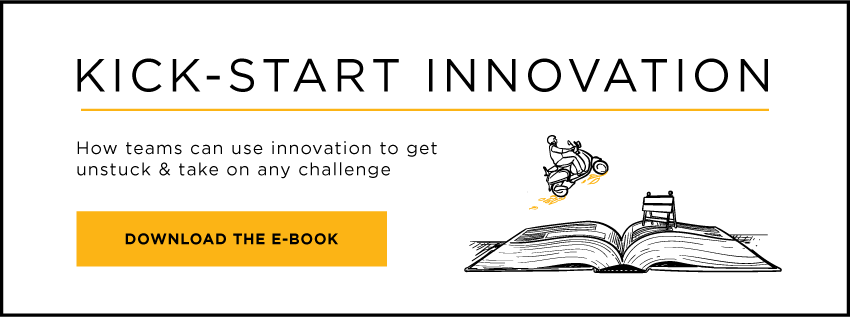These days it seems like every business leader has heard that design thinking is the revolutionary solution that will solve their creative woes. But many still believe it is only relevant for IT developers and product design teams.
Design thinking certainly has its roots in product design and engineering, but it’s equally applicable in every aspect of business. Anyone, in any function, can benefit from learning about and applying design thinking.
Whether companies are trying to improve customer satisfaction, engage employees, or fix a workplace process, design thinking can play a role — if they are facing a problem that can’t be easily solved. Not everyone will be leading or participating in end-to-end design thinking projects, nor do they want to, nor should they. But if they are facing an important business problem that lacks clarity in both the aim and solution the solution — otherwise known as a “wicked problem” — design thinking could help them break down otherwise seemingly insurmountable obstacles.
The difference between regular problems and wicked problems is like the difference between solving a math problem and writing a literature paper. The former has a single expected solution and a clear process for getting there, while the latter offers little more than a broad framework and the challenge to produce something brilliant. Design thinking gets you to that brilliant solution.
Bullies and Bears
Common examples of wicked problems include things like how to eliminate poverty, reverse climate change, or stop bullying, but it can just as easily apply to convincing customers that they want your product, or siloed teams to work together — they are big broad challenges with no obvious solution.
One of ExperiencePoint’s favorite examples of a wicked problem emerged in a workshop for a team from a Pacific Northwest power company who were trying to figure out how to clear ice off of power lines during the long, cold winters. It was a costly and constant problem that the company’s maintenance teams struggled to solve.
An ExperiencePoint facilitator led the team through a design thinking brainstorming session — where participants shout out big crazy ideas regardless of whether they are practical, in hopes of finding their way to a genius solution that they wouldn’t have otherwise considered. In the session, one participant suggested they train bears to climb the poles and shake the ice off; another added that they should put honey on the poles to lure the bears; and a third suggested they use helicopters to put the honey on the poles. That’s when they realized that the downward draft from a helicopter would shake the ice loose, solving the problem.
When people talk about design thinking innovations, they don’t normally picture a group of maintenance workers from a power company, but that is exactly why this example is brilliant. Design thinking is a methodology for solving complex, human-centered problems, and regardless of role, everyone has those kinds of problems.
Rather than waiting until you face a giant problem that you don’t know how to solve, companies can expose their teams to the basics of design thinking. Whether that’s through a small group workshop or company-wide training, introducing employees to this new approach to problem-solving will help them to be innovative in ways that they probably never considered, and prepare them for the day that big challenge comes along.
Developing enough of an awareness of the tools of design thinking to be able to say “Hey, this is a challenge that could benefit from design, let's engage the experts,” is enough for many people to get started. It also provides the foundation for a culture where everyone respects the creative process and is eager to participate when they can. An understanding of what design thinking is and how it works can even help those not involved with the problem to empathize with those doing the work and to provide feedback in a meaningful way.
Learn how to enable innovation skill-building at scale or download our free ebook Kickstart Innovation: A Guide for Organizations.
